Related Research Articles

The Indus Valley Civilisation (IVC), also known as the Indus Civilisation, was a Bronze Age civilisation in the northwestern regions of South Asia, lasting from 3300 BCE to 1300 BCE, and in its mature form 2600 BCE to 1900 BCE. Together with ancient Egypt and Mesopotamia, it was one of three early civilisations of the Near East and South Asia, and of the three, the most widespread, its sites spanning an area from much of Pakistan, to northeast Afghanistan, and northwestern India. The civilisation flourished both in the alluvial plain of the Indus River, which flows through the length of Pakistan, and along a system of perennial monsoon-fed rivers that once coursed in the vicinity of the Ghaggar-Hakra, a seasonal river in northwest India and eastern Pakistan.

Lothal was one of the southernmost sites of the ancient Indus Valley civilisation, located in the Bhal region of the Indian state of Gujarat. Construction of the city is believed to have begun around 2200 BCE.

Rakhigarhi or Rakhi Garhi is a village and an archaeological site belonging to the Indus Valley civilisation in Hisar District of the northern Indian state of Haryana, situated about 150 km northwest of Delhi. It was part of the mature phase of the Indus Valley Civilisation, dating to 2600-1900 BCE. It was among the largest settlements of the ancient civilisation, though most of it remains unexcavated. The site is located in the Ghaggar River plain, some 27 km from the seasonal Ghaggar river. Initial excavations at the site happened in the 1960s, followed by further excavations in the late 1990s, however more sustained excavations have taken place in the past decade.

The Archaeological Survey of India (ASI) is an Indian government agency that is responsible for archaeological research and the conservation and preservation of cultural historical monuments in the country. It was founded in 1861 by Alexander Cunningham who also became its first Director-General.

Kalibangān is a town located at 29.47°N 74.13°E on the left or southern banks of the Ghaggar in Tehsil Pilibangān, between Suratgarh and Hanumangarh in Hanumangarh District, Rajasthan, India 205 km. from Bikaner. It is also identified as being established in the triangle of land at the confluence of Drishadvati and Sarasvati Rivers. The prehistoric and pre-Mauryan character of Indus Valley civilization was first identified by Luigi Tessitori at this site. Kalibangan's excavation report was published in its entirety in 2003 by the Archaeological Survey of India, 34 years after the completion of excavations. The report concluded that Kalibangan was a major provincial capital of the Indus Valley Civilization. Kalibangan is distinguished by its unique fire altars and "world's earliest attested ploughed field". It is around 2900 BC that the region of Kalibangan developed into what can be considered a planned city.

Braj Basi Lal was an Indian writer and archaeologist. He was the Director General of the Archaeological Survey of India (ASI) from 1968 to 1972 and has served as Director of the Indian Institute of Advanced Studies, Shimla. Lal also served on various UNESCO committees.
Gregory Louis Possehl was a professor emeritus of anthropology at the University of Pennsylvania, United States, and curator of the Asian Collections at the University of Pennsylvania Museum of Archaeology and Anthropology. He was involved in excavations of the Indus Valley civilization in India and Pakistan since 1964, and was an author of many books and articles on the Indus Civilization and related topics. He received his BA in anthropology from the University of Washington in 1964, his MA in anthropology from the University of Washington in 1967, and his PhD in anthropology from the University of Chicago in 1974. He conducted major excavations in Gujarat, Rajasthan (Gilund), and in January 2007, began an excavation at the UNESCO World Heritage site of Bat in the Sultanate of Oman.
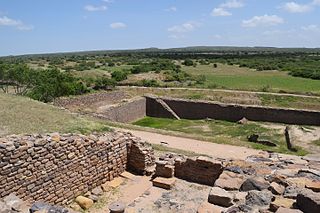
Dholavira is an archaeological site at Khadirbet in Bhachau Taluka of Kutch District, in the state of Gujarat in western India, which has taken its name from a modern-day village 1 kilometre (0.62 mi) south of it. This village is 165 km (103 mi) from Radhanpur. Also known locally as Kotada timba, the site contains ruins of a city of the ancient Indus Valley civilization. Earthquakes have repeatedly affected Dholavira, including a particularly severe one around 2600 BC.
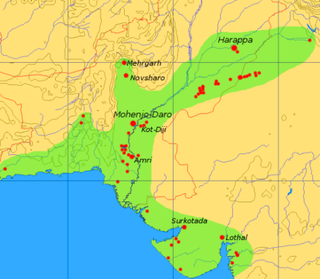
Correct coordinates are: 23.6113°N, 70.9173°E
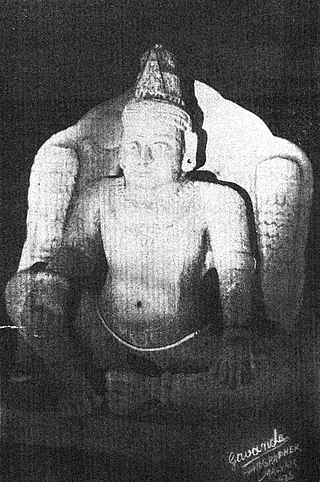
Aagar faliya is a small Indus Valley civilisation site, located at Valsad district in Gujarat, India. This site is, sometimes, considered one of the southernmost limits of Indus Valley civilisation, the other one being Daimabad which is located further south.
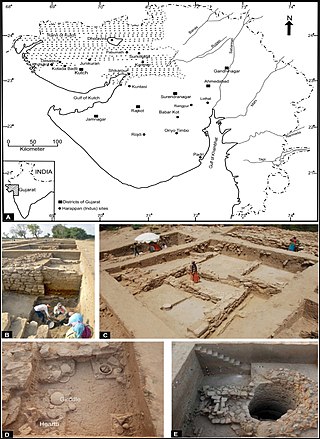
Khirasara is an archaeological site belonging to the Indus Valley civilization. This site is located in Nakhatrana Taluka of Kutch district in the western Indian state of Gujarat. It is located on the bank of Khari river. The site is 85 km from Bhuj, the district headquarter.
Manda is a village and an archaeological site in the Jammu district of the Union Territory of Jammu and Kashmir, India. It was excavated by Archaeological Survey of India during 1976-77 by J. P. Joshi. The site contains ruins of an ancient Indus Valley civilization.
Pabumath is an Indus Valley civilisation archaeological site near Suvai village in Rapar Taluka of Kutch district, Gujarat, India.
Ravindra Singh Bisht is an Indian archaeologist, known for his scholarship on Indus valley civilization and efforts to conserve Indian national monuments. He was honoured by the Government of India, in 2013, by bestowing on him the Padma Shri, the fourth highest civilian award, for his contributions to the field of archaeology.

Suraj Bhan (1931–2010) was an Indian archaeologist and professor of archaeology. His academic work was said to bear a deep imprint of Marxism. He was also involved with the work of Communist Party of India (Marxist) in Haryana and took particular interest in the People's Science movement.
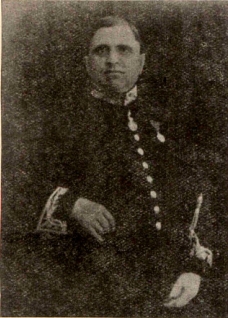
Rai Bahadur Daya Ram SahniCIE was an Indian archaeologist who supervised the excavation of the Indus valley site at Harappa in 1920 to 1921 But the first report of Harappan excavations came out in 1921, 29 March by John Marshall. Due to which various historians have chosen 1921 AD as the time of Harappan excavation. A protege of John Marshall, in 1931, Sahni became the first Indian to be appointed Director-General of the Archaeological Survey of India (ASI), a position in which he served till 1935.
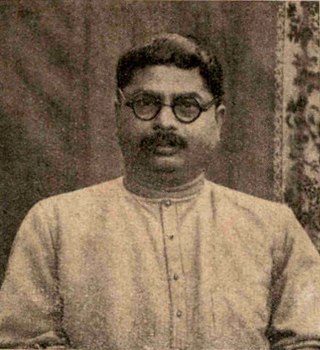
Nani Gopal Majumdar was an Indian archaeologist who is credited with having discovered 62 Indus Valley Civilization sites in Sindh including Chanhudaro.
Achala Moulik is an Indian writer and former bureaucrat who served as Education Secretary to the Government of India, Director General of the Archaeological Survey of India from 1993 to 1994 and Additional Chief Secretary to the Government of Karnataka from January to June 2001. In 2013, Moulik won the Sergey Yessenin Prize for promoting Russian literature.
Shambhudan Gadhvi is a former master clerk and amateur geologist from Gujarat who discovered the Indus valley site of Dholavira in the early 1960s.
References
- "C. V.:Sri Jagat Pati Joshi". Infinity Foundation.